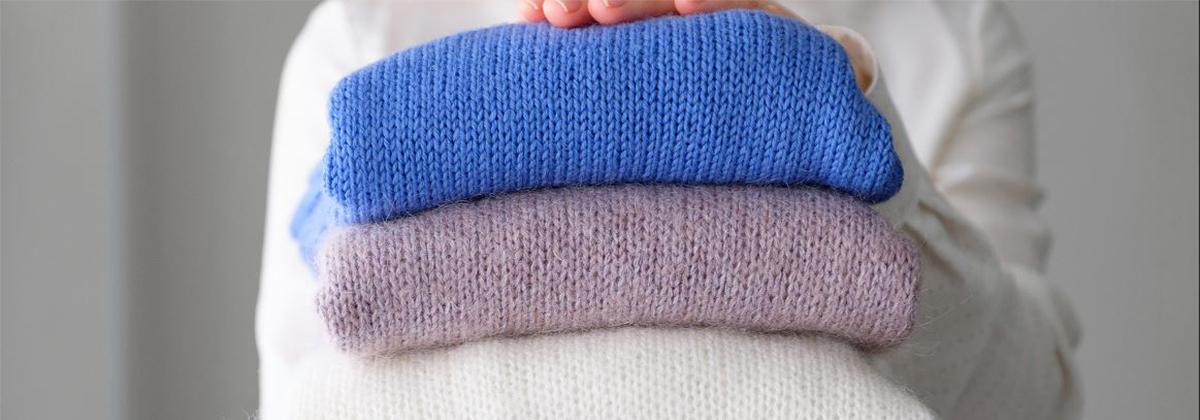31 Oct How to Wash Cashmere and Canvas Fabrics
The word “cashmere” evokes a sense of luxury and exclusivity, partly because of its rarity and extraordinary softness. Unlike other wools, cashmere fibers are fine enough that a woolen jacket won’t itch. Just like most wools, cashmere needs extra care to ensure it doesn’t shrink, pilling, or twist in the wash. To increase the long life and practical use of canvas fabrics, you must also be sure how to wash them. Moreover, proper care and maintenance are critical. You should ensure not to use canvas fabric around sharp objects, such as tree branches, that will cause holes. In the following, you will learn how to wash canvas and cashmere fabrics.
Introducing cashmere fabric
Cashmere comes from the wool of goats explicitly bred for their soft, fur-like undercoat. These goats usually live in areas with difficult climates with severe winters, such as Mongolia. Each goat produces only a few ounces of fiber annually, so cashmere is very expensive compared to similar items from other wool forms, such as merino, camel, and sheep. The production process also requires separating the finest hairs of the undercoat from the thicker parts of the goat hair, which also increases the cost.
Hand washes cashmere fabric.
- Due to the delicacy of the fibers, hand washing of cashmere fabric is desirable; It may even soften over time as long as it is washed properly.
- Before washing, turn the cashmere clothes inside out.
- Place it in a bucket or plastic pan filled with clean cold water, use a small amount of detergent for woolen or delicate clothes and follow the recommendations on the detergent bottle. If necessary, a few drops of baby shampoo will work instead of detergent because the fibers are hair anyway.
- Gently swirl the cloth in the pan, then let it soak for about five minutes.
- Drain the water. Then clean the pan again with cold water. Swirl the cashmere in the pan again to ensure no foam is left; otherwise, rinse again.
- Drain the water once more, then place the cashmere cloth on a white towel, gently fold the towel or press another white towel over the woolen cloth to absorb the water.
- Dry the cashmere fabric flat. Drying it on a clothesline or clothes hanger may cause it to warp.
Washing cashmere fabric with a washing machine
If the care label says cashmere is machine washable, choose the gentlest cycle with cold water. Anything other than a soft round may cause felting or pilling of the fabric. Placing the material in a mesh laundry bag also prevents knots and pilling. Use a small amount of detergent for delicate clothes, as in the hand wash method. Dry the fabric with a towel, then lay it on a flat rack in the open air or on a fresh white towel to dry. Colored towels may return color to the woolen fabric.
Mixed garments and other woolen garments
Most wool garments will stay healthy by following the exact care instructions as cashmere unless the care label says “dry clean only.” Wash other wool-blend garments such as cashmere or follow care label instructions. Some wool blends are more durable than others. Anything with wool can shrink if washed or rinsed in too hot water or at a different temperature. Air drying out of direct sunlight is always safer than the dryer.
Stain removal
Press as much as possible on fresh stains such as food and drink with a white cloth. Moisten the area with a bit of cold water and press on it more. Rubbing a drop of baby shampoo gently on your finger will soften all kinds of stains. Otherwise, use stain remover soap for woolen clothes, then rinse the cashmere fabric as described earlier.
Keeping Kashmiri clothing and accessories
Although it may be tempting to hang a cashmere sweater in the closet when not in use, it’s not a good idea. Clothes hangers usually mark the shoulder of woolen sweaters or any other sweaters of the same shape. Also, wool deforms easily. To store jackets and scarves, fold them and put them away from direct sunlight. As with many other dyed natural fibers, continuous exposure to sunlight will cause them to fade.
Introducing canvas fabric
For a long time, there was a need for more robust fabrics than natural fiber fabrics, and utterly resistant to water and sunlight. With the development of petrochemical industries, natural fiber and cotton fabrics were combined with polymer materials such as polyester, named canvas. After that, with the introduction of new industrial materials to the textile industry, various materials were added to them during the production of this fabric. Each of these fibers and polymer materials has different properties to it. Canvas fabrics are generally water-resistant. Among their other features are heat and fire resistance, sun protection, wind resistance, high weight, and sharp objects.
Wash canvas fabric by hand
Some canvas fabrics lose their stiffness and structure when washed. To avoid changes in design, we recommend hand washing.
Dust removal
Wash the canvas fabric by hand need shaking them hard to remove as much dust and dirt as possible before washing it. Tap the fabric like a rug or a heavy blanket. Don’t use sharp tools, as they will damage the canvas. Remove any dirt stuck to the material. The less dirt remains on it, the less detergent you use.
Using detergents
Use mild detergents such as soap or laundry liquid with soft brushes to wash canvas fabric. You can also use wet wipes with some soap for cleaning. Remove all the soap and rinse with cold water for deeper cleaning.
Remove stains
To remove stains on fabric, use a particular stain removal product suitable for the material. The stain solution is ideal for protein stains such as wine, coffee, ink, grass, urine, blood, and old stains. Soak the fabric in warm water mixed with ¼ cup of aromatic vinegar for 30 minutes to get rid of the unpleasant smell.
Washing the canvas fabric with a washing machine
The best way to wash canvas fabric is by hand, but if you don’t have time to wash it by hand, you can wash some canvas fabrics with a washing machine. To do this, first, shake the dust and dirt on the cloth well. Add a little detergent and set the speed of the washing machine to a low level so that the fabric isn’t damaged in the spin.
After washing, immediately iron the fabric or hang it to dry. Depending on the material’s dirty, you may need to use a mild detergent or stain remover to brighten it up, but these aren’t always necessary. If you have already removed the stains, cold water, and a gentle cycle through the washing machine may clean the canvas.
Be sure to pay attention to the temperature of the water. If your canvas fabric has a painting or print, it may fade or be transferred to another material when exposed to high-temperature water. To be sure, you can leave the part of the fabric that has a pattern in hot water for 10 minutes. If the print and design on the material aren’t removed, you can wash it in the washing machine with warm water.
But it’s better to use low-temperature water. Also, if your canvas fabric is dirty or moldy, add an alternative bleach capsule to the wash cycle. Canvas items such as bags and sports shoes should be dried naturally to maintain their shape.
To remove wrinkles in some items, you can iron at the highest temperature or steam. You can use sprays to care for canvas fabrics. They are a safe, non-toxic, non-allergenic fabric spray that removes odor and adds a pleasant smell. Be careful to wash canvas fabric only with similar colors and materials.
Important tips
As you read, canvas fabric can be washed by hand and with a washing machine. But in both cases, you should consider some points so that your canvas cloth isn’t damaged during washing. Here are some tips for you:
- Adjusting the water temperature is very important; it’s better to use cold water.
- Don’t put the canvas cloth with colored clothes for washing.
- Use suitable detergent solutions.
- Use soft brushes.
- Use a clean and wet towel.
- Be sure to remove the dirt from the fabric before washing.
- After washing, never put the canvas fabric before the sun to dry because it causes the fabric’s color to fade.
To wrap up
Many women and men notice canvas and cashmere clothes in autumn and winter. These two fabric types have different textures and distinct maintenance and washing methods. But if you don’t protect this clothing and wash it inaccurately, your dress may become worn out, pilled, or pierced. Any problem with your clothes during washing means saying goodbye to them. If you don’t have the opportunity or patience to wash your clothes, you can count on the specialized NeatEx team. With the most advanced tools and the latest knowledge, we will deliver your clothes of the best quality as soon as possible. Don’t damage your valuable clothes with improper washing. NeatEx washes your clothes best and ensures you have clean and tidy clothes.




Sorry, the comment form is closed at this time.